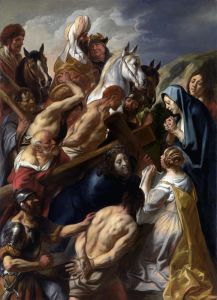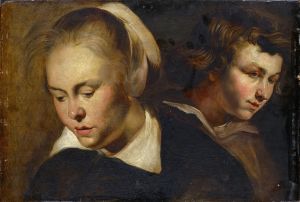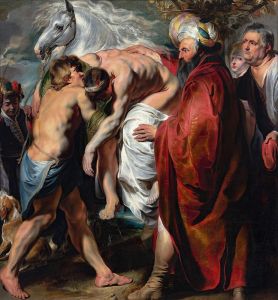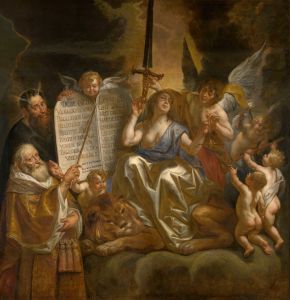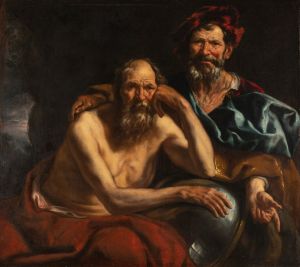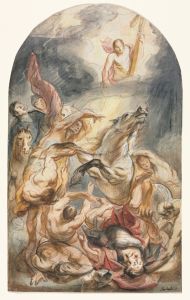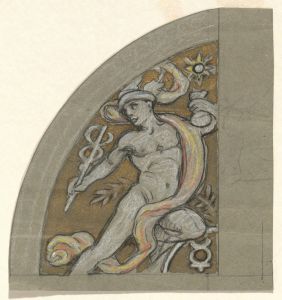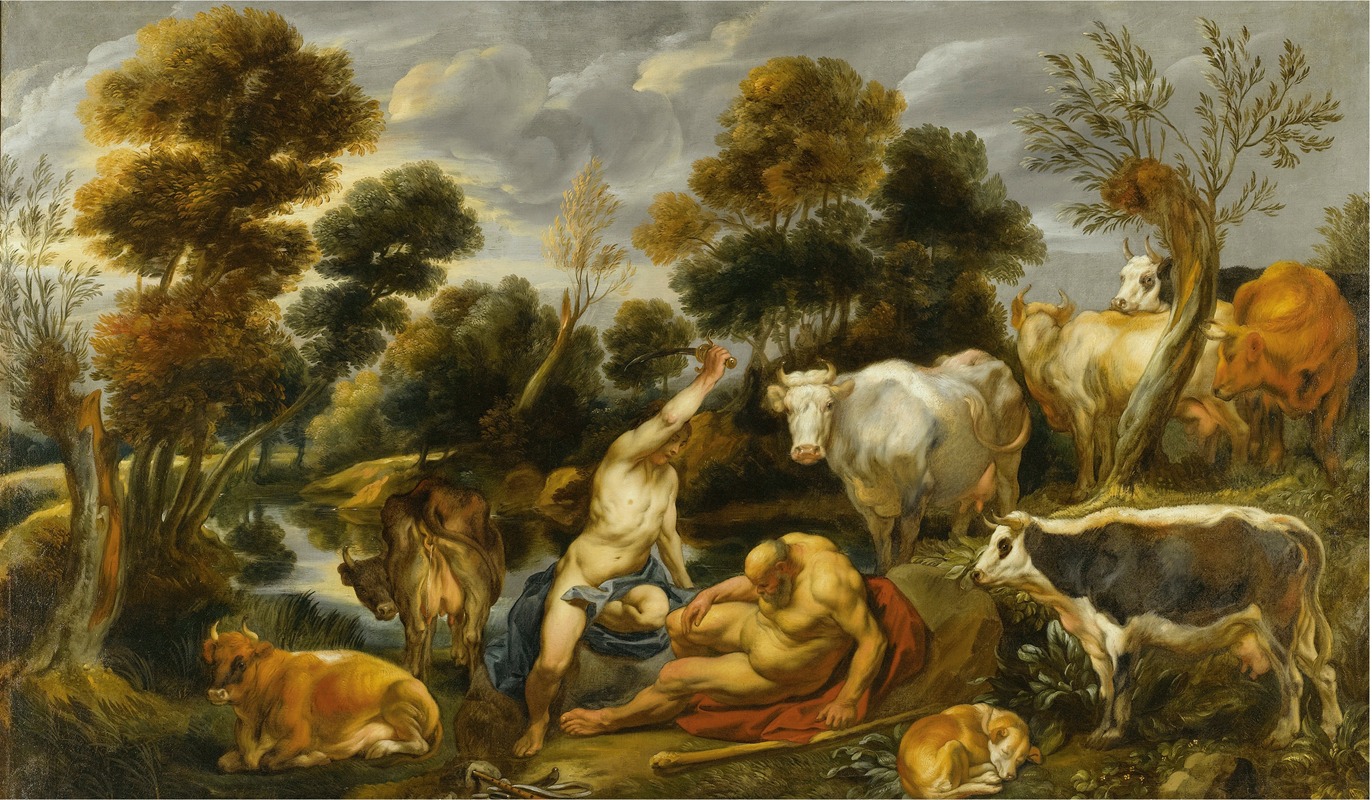
Mercury, Argus and Io
A hand-painted replica of Jacob Jordaens’s masterpiece Mercury, Argus and Io, meticulously crafted by professional artists to capture the true essence of the original. Each piece is created with museum-quality canvas and rare mineral pigments, carefully painted by experienced artists with delicate brushstrokes and rich, layered colors to perfectly recreate the texture of the original artwork. Unlike machine-printed reproductions, this hand-painted version brings the painting to life, infused with the artist’s emotions and skill in every stroke. Whether for personal collection or home decoration, it instantly elevates the artistic atmosphere of any space.
"Mercury, Argus and Io" is a painting by the Flemish Baroque artist Jacob Jordaens, created in the 17th century. Jordaens, a prominent figure in the Antwerp art scene, was known for his dynamic compositions, vibrant use of color, and skillful storytelling through mythological, biblical, and genre scenes. This painting depicts a scene from Ovid's Metamorphoses, a classical Roman text that was a popular source of inspiration for Baroque artists.
The artwork illustrates the mythological story of Io, a mortal woman loved by Jupiter (Zeus in Greek mythology). To hide his affair from his wife Juno (Hera), Jupiter transformed Io into a white heifer. Juno, suspicious of her husband, sent the hundred-eyed giant Argus to guard Io. In the painting, Mercury (Hermes in Greek mythology), acting on Jupiter's orders, is shown lulling Argus to sleep with his music before killing him to free Io.
Jordaens captures the dramatic tension of the narrative through his composition. Mercury is depicted holding a flute or another musical instrument, symbolizing the method he uses to enchant Argus. Argus, identifiable by the many eyes on his body, is shown in a state of drowsiness, emphasizing the moment before his demise. Io, in her bovine form, is often included in the scene, highlighting her plight and the central conflict of the myth.
The painting reflects Jordaens' mastery of the Baroque style, characterized by its dynamic movement, dramatic contrasts of light and shadow, and emotional intensity. His use of rich, warm colors and detailed textures brings the mythological figures to life, while the composition guides the viewer's eye through the unfolding story.
"Mercury, Argus and Io" demonstrates Jordaens' ability to interpret classical mythology with a sense of drama and humanity. While Jordaens was influenced by his contemporaries, such as Peter Paul Rubens, his work is distinguished by its robust figures and earthy realism.
The exact date of the painting's creation is not definitively documented, but it is generally attributed to Jordaens' mature period, when he was at the height of his artistic powers. The painting is housed in a museum or private collection, though specific details about its current location or provenance may vary depending on the source.
This work is an example of how Baroque artists like Jordaens engaged with classical mythology to explore themes of love, deception, and divine intervention, making these ancient stories accessible to their contemporary audiences.





